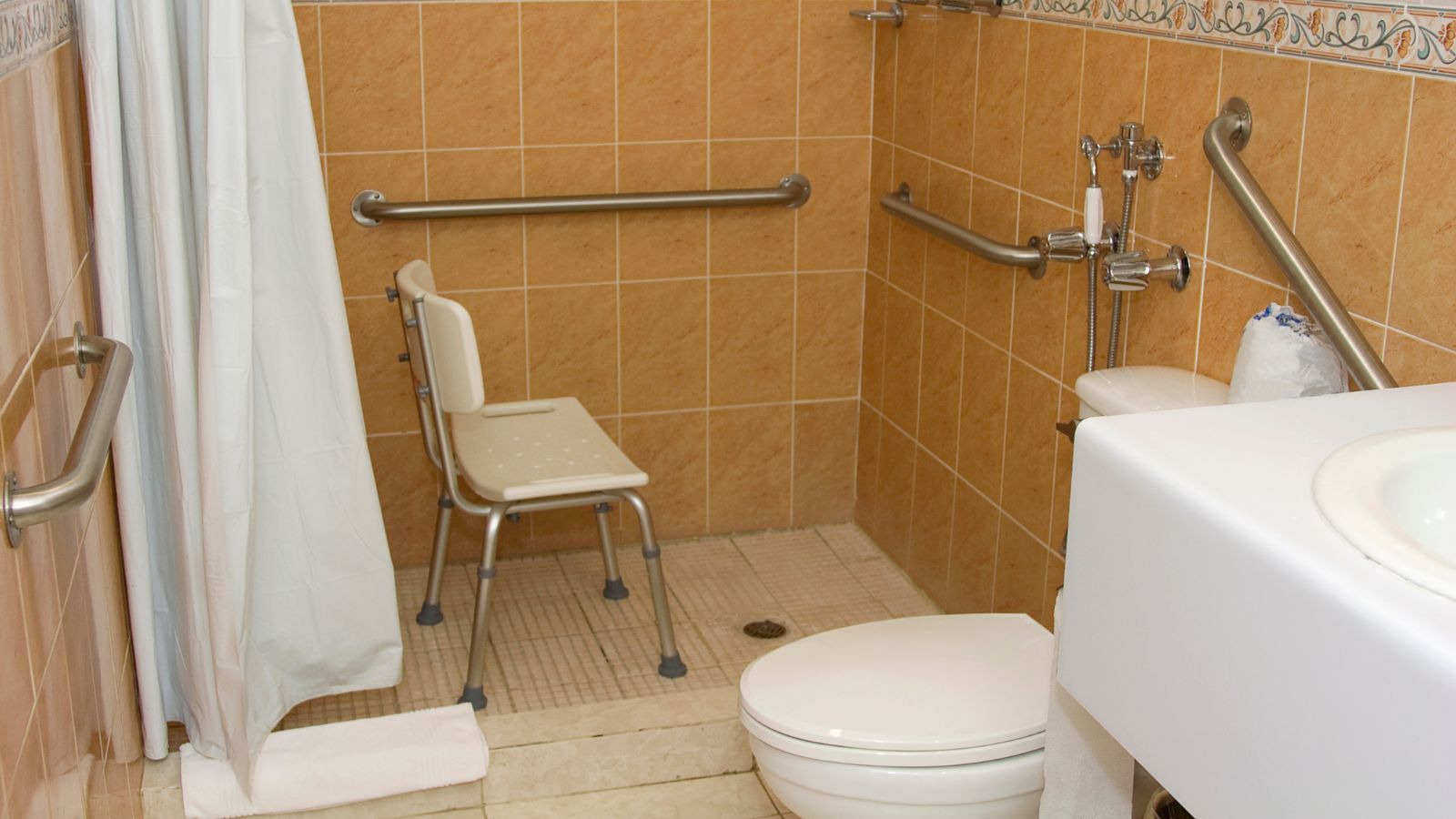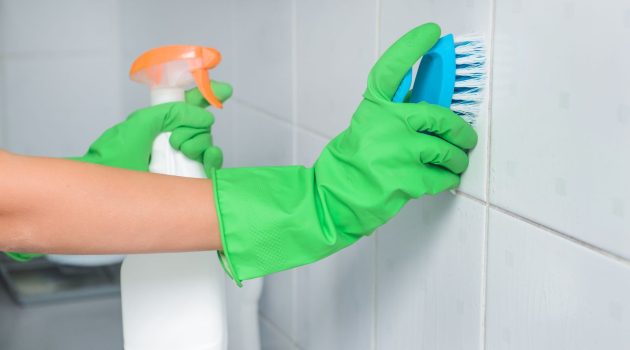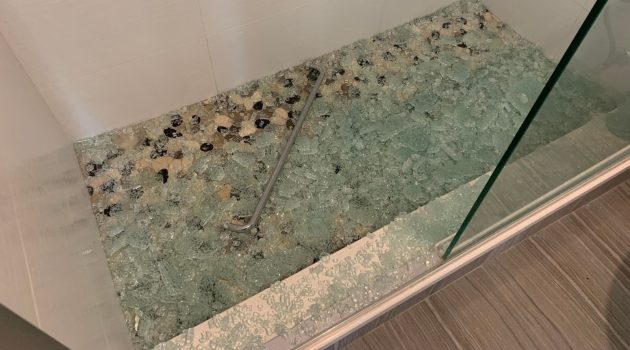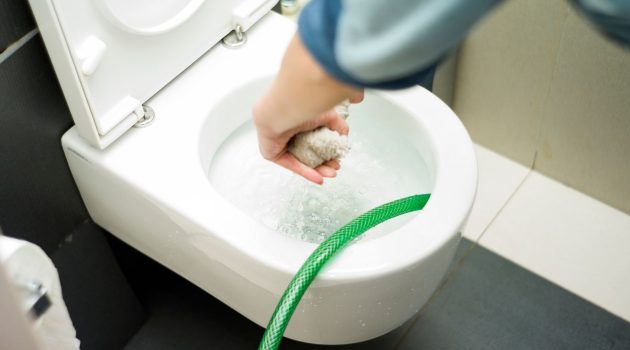Experiencing a clogged toilet and shower simultaneously can be quite a perplexing plumbing issue for any homeowner.
It’s an inconvenience that signals there might be a larger problem in your home’s plumbing system.
When both your toilet and shower drain are clogged, it’s often because the blockage is located further down the sewer line, past the point where both fixtures connect to your main drainage system.
This shared clog usually indicates that the obstruction is significant enough to affect multiple plumbing fixtures.
If you’re noticing that water is not draining properly in both areas, or worse, wastewater is backing up into the tub or shower when you flush, you’re likely facing a shared sewer line problem.
Understanding the interconnected nature of your home’s plumbing can be key to identifying the severity of the blockage and the necessary steps to remedy the situation.
1. Understanding the Causes of a Dual Clog
When both your shower and toilet clog at the same time, it’s often a sign of deeper issues within your home’s plumbing system. Let’s explore what could be happening.
Common Obstructions
Debris: Everyday items can cause blockages in your plumbing. Common culprits include:
- Hair: Accumulates in your pipes, especially near the shower drain.
- Grease: If it gets into the system, often from kitchen sinks, it can solidify and block pipes.
- Soap scum: Over time, residue from soap can adhere to pipe walls, narrowing the passage.
- Tree roots: They can intrude into sewer lines, sometimes crushing or blocking them completely.
Plumbing System Basics
Your home’s wastewater disposal operates through a network of drain pipes that converge into a main sewer line.
If this line gets blocked by the aforementioned obstructions, it can back up the system, impacting multiple fixtures.
Effects of Vent Pipe Issues
The vent pipe plays a crucial role in your plumbing’s functionality. Proper venting:
- Enables airflow to maintain proper drain flow.
- Prevents vacuum conditions that inhibit drainage.
Vent pipe obstructions, including nesting debris or even snow buildup, can disrupt the balance, leading to drainage issues.
2. Professional Diagnosis and Repair
When your toilet and shower are clogged at the same time, it’s often a sign of a deeper issue in your plumbing system.
A professional plumber can diagnose and repair the problem effectively.
The Role of the Plumber
Your plumber is like a detective for your pipes. When they arrive, they’ll assess the situation to determine if the clog is localized or if it’s a symptom of a broader issue, like a sewer line clog.
A plumber may perform a variety of tasks, such as snaking the drain or using high-pressure water jetting to clear blockages.
Advanced Plumbing Inspections
Plumbing inspections are a critical step in understanding the root cause of your clogged drains. Plumbers might utilize specialized equipment like video cameras that go inside your sewer pipes.
This visual inspection can reveal problems such as buildup, cracks, or roots intruding your sewer main.
Trenchless Repair Techniques
If the issue lies with the sewer main, trenchless repair techniques come in handy. These methods include pipe bursting, where a new pipe is pulled through the old one while simultaneously fracturing it outward.
This method causes minimal damage to your property as it doesn’t require extensive excavation.
3. DIY Unclogging Techniques
When your toilet and shower are clogged at the same time, the right DIY technique can often save you from the need for professional help.
Here are some effective methods you can try to get things flowing smoothly again.
Using a Plunger Correctly
To properly use a plunger in your toilet:
- Ensure a Good Seal: Press the plunger down to form a tight seal over the hole at the bottom of the toilet bowl.
- Plunge Vigorously: Use a forceful in-and-out motion, keeping the seal intact. Do this for about 15-20 seconds.
For your shower drain, a smaller plunger is ideal:
- Apply a similar technique, ensuring water covers the plunger to create a seal over the drain.
Natural Solutions on How to Dissolve Buildup
- Start with pouring 1 cup of baking soda down the drain.
- After that, add 1 cup of vinegar and let the natural chemical reaction work to dissolve organic buildup.
Hot Water:
- Once the reaction has done its job for about 30 minutes, pour a pot of hot water (not boiling) down the drain to clear the mixture and any loosened debris.
Manual Drain Clearing
Drain Snakes: A drain snake can be fed into the toilet or shower drain to manually clear the blockage.
- Insert the Snake: Carefully feed the snake down into the drain until you feel resistance.
- Rotate and Push: Slowly turn the handle, which will help the snake to latch onto the debris so you can pull it out or break it apart.
Remember to wear gloves and have a bucket handy for any debris you retrieve from the drain.
4. Preventative Measures and Maintenance
To keep your plumbing in top condition and prevent simultaneous clogging of your toilet and shower, it’s essential to adopt proper maintenance practices and avoid certain habits that can damage your pipes.
Regular Cleaning Habits
Keep your drains clear and functional with regular cleaning routines. Once a month, flush your drains with hot water mixed with vinegar to break down any budding clogs.
For your shower, use a drain cover to catch hair and soap scum, preventing these materials from entering the plumbing system.
Avoiding Common Pitfalls
To preserve your pipes, never flush sanitary products, paper towels, or wipes down the toilet; they can easily create blockages.
In the kitchen, avoid pouring grease down the drain as it solidifies and causes obstructions, potentially impacting your bathroom plumbing.
Professional Plumbing Maintenance
Schedule an annual inspection with a licensed plumber to handle your plumbing maintenance.
This preventive measure will ensure that any issues deep within your sewer line or less accessible areas are identified and resolved before they lead to widespread clogging.



